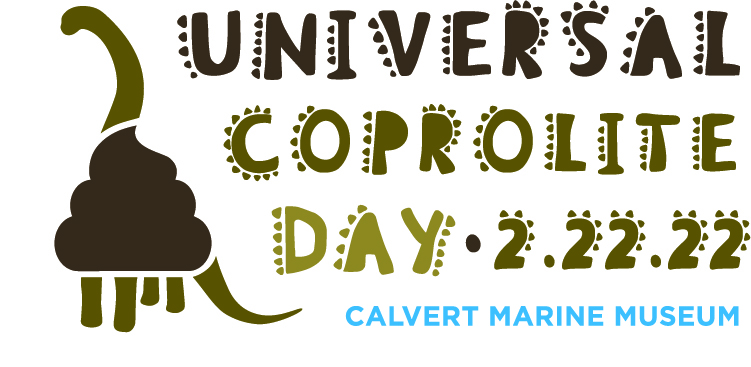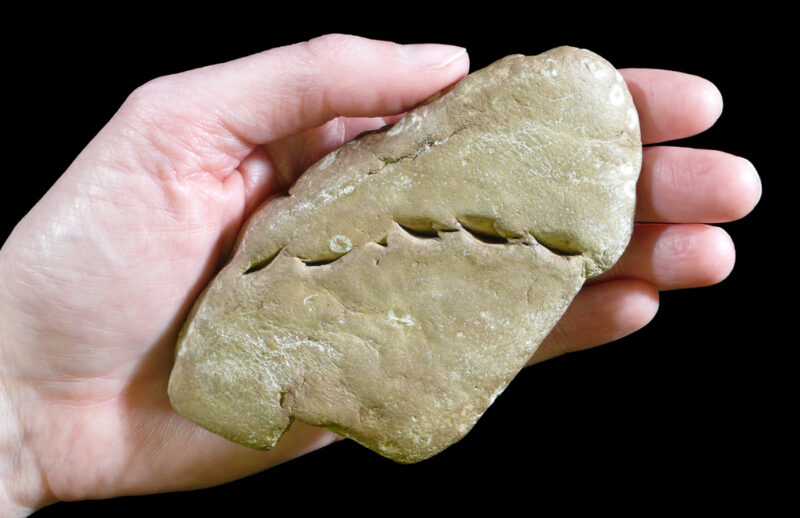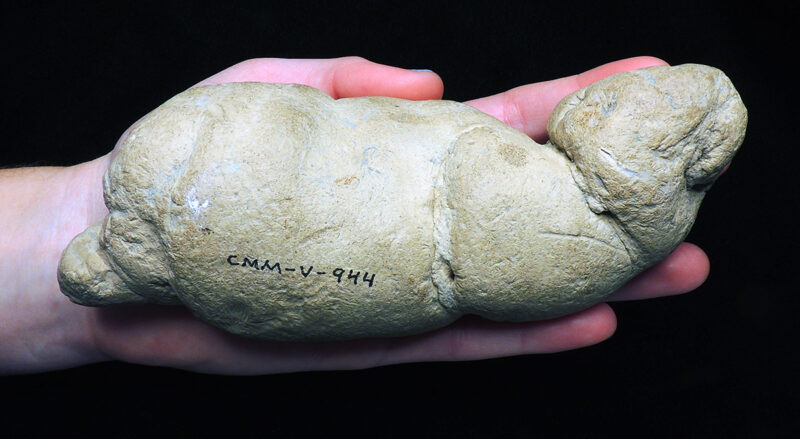
Remarkably, when feces fossilize, they are known as coprolites. The term coprolite comes from the Greek words kopros (meaning dung) and lithos (meaning stone).
To celebrate the importance of coprolites in the fossil record and in the study of prehistoric life, the Department of Paleontology at the Calvert Marine Museum (CMM) is initiating the celebration of Universal Coprolite Day, recognized every year henceforth on February 22.
“Universal Coprolite Day” is recognized to celebrate coprolites wherever they may form in the Universe.
In this inaugural year, the Calvert Marine Museum will celebrate Universal Coprolite Day on Sunday, February 20, 2022. From 10 a.m. – 3 p.m., activities and learning stations will be placed throughout the museum, as well as CMM’s vast collection of coprolites. Don’t worry, coprolites don’t have the odor you typically associate with feces. These fossils preserve through mineral replacement, which removes the organic materials that produce the familiar fecal funk.
In honor of this monumental occasion, a logo was designed to represent this day (Fig. 1). As the State Paleontology Collection and Research Center, CMM’s Universal Coprolite Day logo was inspired by none other than, Astrodon, the Maryland State Dinosaur.
The Paleontology Collection at the Calvert Marine Museum houses some of the most amazing coprolites ever found, including shark and fish-bitten coprolites, a coprolite preserving the impression of a baby turtle shell, partially eaten coprolites, and the only known fossil skull filled with coprolites. Coprolites were first recognized as fossilized feces by British fossil hunter Mary Anning in 1824. Then in 1829, British geologist William Buckland named them coprolites.
Coprolites are also known as trace fossils because they are evidence of the activities of once-living animals.
The vast majority of feces do not fossilize; they are recycled into the ecosystem. But when conditions are just right, feces can fossilize, and in so doing, they preserve a wealth of information on the diets of long-dead animals.
Coprolites are found worldwide in rocks from the Cambrian (beginning 540 million years ago) to the present. Untold thousands of specimens are housed in museums and private collections around the world. We hope that this year and in years to come, they too will celebrate Universal Coprolite Day!

12 million-year-old crocodile coprolite that preserves shark tooth bite impressions found along Calvert Cliffs by William (Douggie) Douglass. Photo courtesy of Calvert Marine Museum.

Crocodile coprolite approximately 14 million years old. It was collected from along Calvert Cliffs by the late Norm Riker. Photo courtesy of Calvert Marine Museum.


